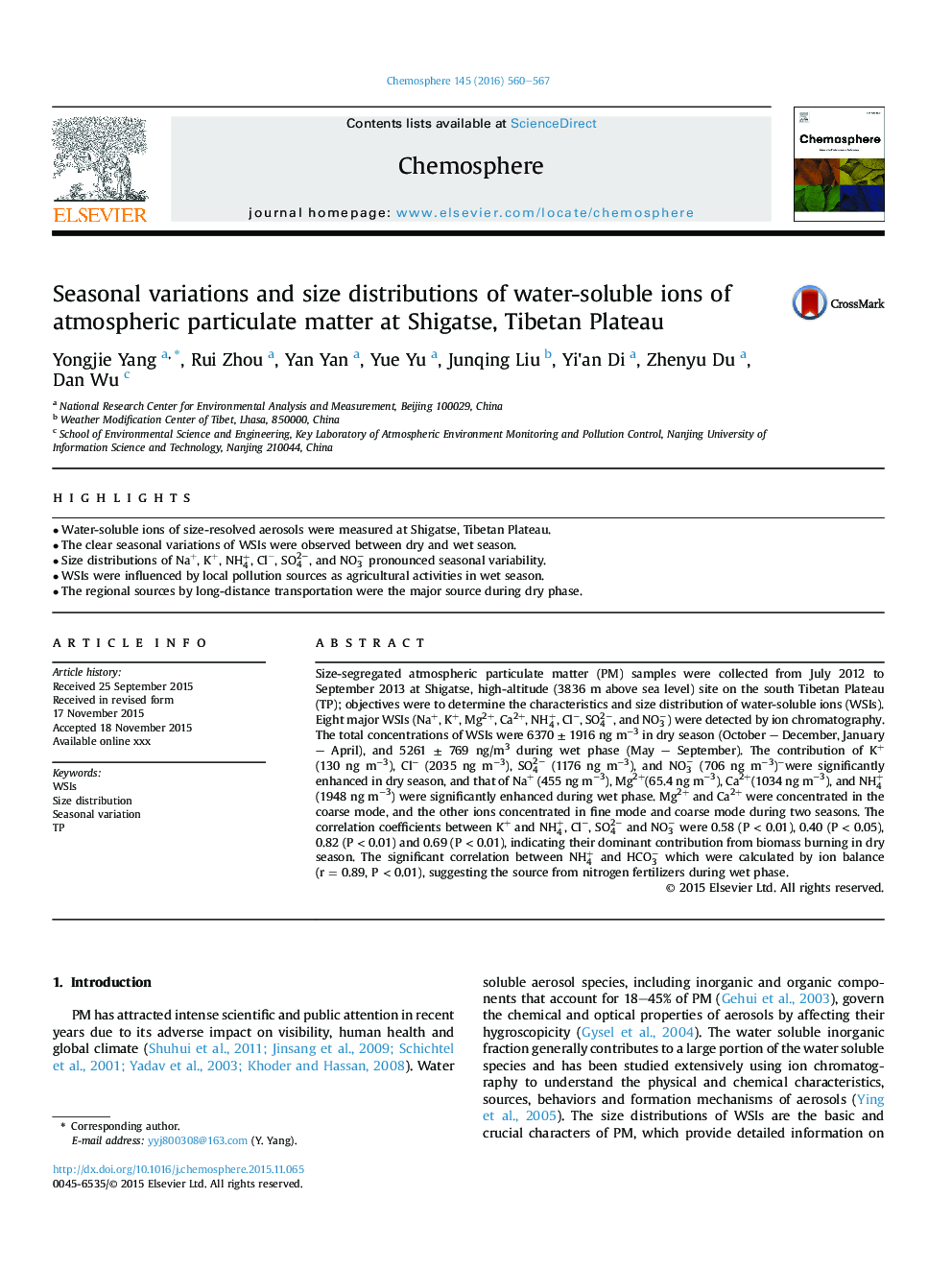| Article ID | Journal | Published Year | Pages | File Type |
|---|---|---|---|---|
| 6307063 | Chemosphere | 2016 | 8 Pages |
Abstract
Size-segregated atmospheric particulate matter (PM) samples were collected from July 2012 to September 2013 at Shigatse, high-altitude (3836 m above sea level) site on the south Tibetan Plateau (TP); objectives were to determine the characteristics and size distribution of water-soluble ions (WSIs). Eight major WSIs (Na+, K+, Mg2+, Ca2+, NH4+, Clâ, SO42â, and NO3â) were detected by ion chromatography. The total concentrations of WSIs were 6370 ± 1916 ng mâ3 in dry season (October - December, January - April), and 5261 ± 769 ng/m3 during wet phase (May - September). The contribution of K+ (130 ng mâ3), Clâ (2035 ng mâ3), SO42â (1176 ng mâ3), and NO3â (706 ng mâ3)âwere significantly enhanced in dry season, and that of Na+ (455 ng mâ3), Mg2+(65.4 ng mâ3), Ca2+(1034 ng mâ3), and NH4+ (1948 ng mâ3) were significantly enhanced during wet phase. Mg2+ and Ca2+ were concentrated in the coarse mode, and the other ions concentrated in fine mode and coarse mode during two seasons. The correlation coefficients between K+ and NH4+, Clâ, SO42â and NO3â were 0.58 (P < 0.01), 0.40 (P < 0.05), 0.82 (P < 0.01) and 0.69 (P < 0.01), indicating their dominant contribution from biomass burning in dry season. The significant correlation between NH4+ and HCO3â which were calculated by ion balance (r = 0.89, P < 0.01), suggesting the source from nitrogen fertilizers during wet phase.
Related Topics
Life Sciences
Environmental Science
Environmental Chemistry
Authors
Yongjie Yang, Rui Zhou, Yan Yan, Yue Yu, Junqing Liu, Yi'an Di, Zhenyu Du, Dan Wu,
